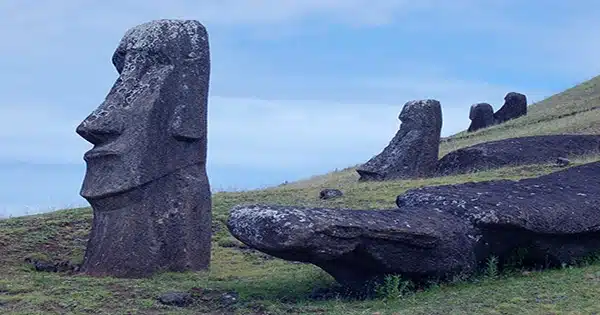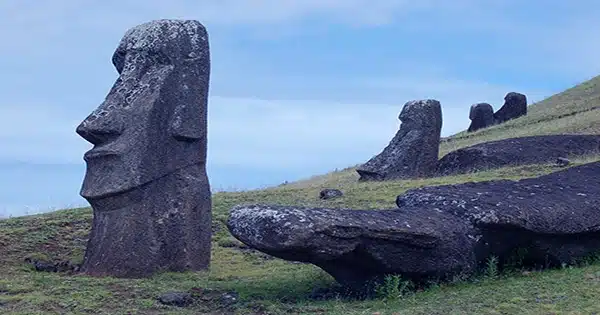A team of philologists, chemists, environmental physicists, and engineers from various European institutions discovered evidence of an undeciphered script on wooden tablets constructed on Easter Island, representing a separate writing system. Their study was published in the journal Scientific Reports.
When Europeans landed on Easter Island, they discovered not just enormous stone heads, but also indigenous people and wooden tablets with carved characters that could not be read. Oral histories of the people who originally lived on the island are now gone, as are the people themselves—many died from sickness, were enslaved, or were slain.
The written language represented by the characters cut into the tablets has been attributed to individuals from other places, whose sculptures were brought back to Easter Island by European sailors. In this fresh endeavor, the researchers examined the tablets again and discovered evidence that they were constructed by people living on the islands before the advent of Europeans, implying that they independently formed their written language.

The script carved into the tablets has become known as Rongorongo. It was initially discovered by Europeans who landed on the island, also known as Rapa Nui, in the late nineteenth century. A study of the writing from images of some of the tablets revealed that they were made by putting tiny pictures together, the majority of which feature easily identifiable objects such as human body parts, animals, or tools. Previous attempts to date the tablets revealed that at least two of them were fashioned from trees that grew on Easter Island in the nineteenth century, after European arrivals.
In this current endeavor, the research team radiocarbon-dated four more of the tablets recovered from Easter Island and preserved in a museum in Rome, Italy. They discovered that three of the tablets were constructed from wood chopped down on Easter Island shortly after European settlement, while the fourth was made from a tree felled 200 years before European arrival.
It came from a tree that wasn’t native to Easter Island, but rather from South Africa. According to the experts, the tablet’s wood washed ashore on Easter Island (most likely as a result of a shipwreck), where people carved phrases in their native language.
















